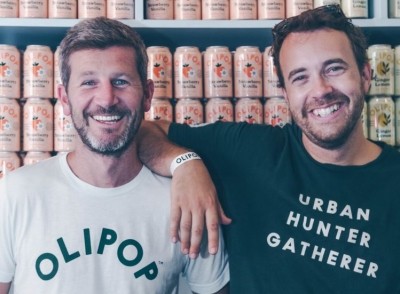Coca-Cola Co. leverages ‘disciplined’ innovation, increases marketing to build on strong Q2 results

The company raised its annual organic revenue target to a projected 12-14% and adjusted earnings per share to 12-15% versus a prior forecast of a high single digits increase for both after net revenues in the quarter grew 42% to $10.1bn and organic revenues grew 37%.
“We are encouraged by our results and raising our top line, bottom line and cash flow guidance even as we are accelerating investments in the future. At the same time, we also recognize the trajectory may be dynamic and because of that, we must remain flexible to respond to changes in the environment,” James Quincey, chairman and CEO of The Coca-Cola Co., told analysts during the company’s second quarter earnings call July 21.
He explained that much of Coca-Cola’s revenue growth in Q2 was attributed to the ongoing recovery of the away-from-home business in markets where the threat of COVID-19 is easing with increased vaccinations. However, he added, the recovery is “asynchronistic,” and Coca-Cola is exploring other ways to drive sales, including innovation and stepped up brand building and marketing.
‘We’re certainly starting to see more experimentations … and more discipline’
A year after a 27% drop in year-over-year sales prompted Coca-Cola to cut a number of “zombie brands” and declare that it would focus on “fewer but bigger and stronger” innovations, the company’s disciplined approach to scaling “big bets” and innovating through “loved and scaled brands” is paying off.
Quincey explained that when it comes to innovation, “we’re never satisfied as a kind of philosophical starting point, but we’re certainly starting to see more experiments happen out there and more discipline” in identifying and stopping innovations that aren’t working and investing in those that “have legs to be taken to the next place.”
For example, he noted, the company is moving forward with the launch Coca-Cola Zero Sugar across global markets, including in the US earlier this month, after determining that the product’s “new and improved” recipe and packaging “are resonating strongly with consumers,” and not cannibalizing Coke Light or Diet. Rather, it is a “net accretion to the Coke franchise.”
Now in nearly 50 markets, Quincey said, Coca-Cola Zero Sugar has grown 15% year-to-date, resulting in high single-digit growth versus 2019.
Coca-Cola also is seeing “rapid consumer traction and attractive proposition of healthy indulgence by AHA [sparkling water], which began as an intelligent local experiment in the US,” but which the company now believes “can transition to a bigger bet and travel internationally,” Quincey said.
He said he also sees potential for expansion of several innovations in dairy, including fairlife, “which has done very well in the US” and is now expanding to China.
Successful experimentations in innovation are not restricted to new products, as illustrated by Coca-Cola’s expanded use of rPET, 100% recycled PET packaging, from Europe with the recent launch in the US of a 13-ounce bottle in the marketplace, Quincey noted.
‘We’re doubling our spend on consumer-facing activities’
At the same time Coca-Cola is moving forward with promising innovations, it is building brand awareness and loyalty with increased marketing, which was temporarily trimmed during the early months of the pandemic.
“We’re doubling our spend on consumer-facing activities for the rest of the year with an eye to both delivering the year, but also being well-prepared for 2022,” Quincey said, noting that in terms of dollars the company has a “very robust investment agenda that will see us getting back to 2019 levels.”
But, he added, Coca-Cola’s approach isn’t just about boosting spend, it is about increasing the efficacy of marketing efforts to make investments go farther.
“When you look under the hood … one of the big changes we’ve made in recent months is to improve the quality of that spend,” he said. “Our objective is to be able to actually generate more with the same, and we’re please with progress that we’re making in that space, particularly as you think about some of our newer areas, digital media, etc.”
Coca-Cola’s stepped-up brand investment aims not only to maintain and expand the company’s market share, but also help hedge against upcoming price increases due to inflation and higher input costs, noted Quincey.
He explained, “Brands that have strong consumer resonance will be able to pass through costs, as we have done historically … and so the strategy on how to manage through that and stay engaged with the consumer to keep the momentum in the business and keep the margin structure steady or improving is the capability of the Coke system.”
Ultimately, he said, these and other strategic moves will help Coca-Cola emerge stronger from the pandemic and continue to deliver growth as it did this quarter.











